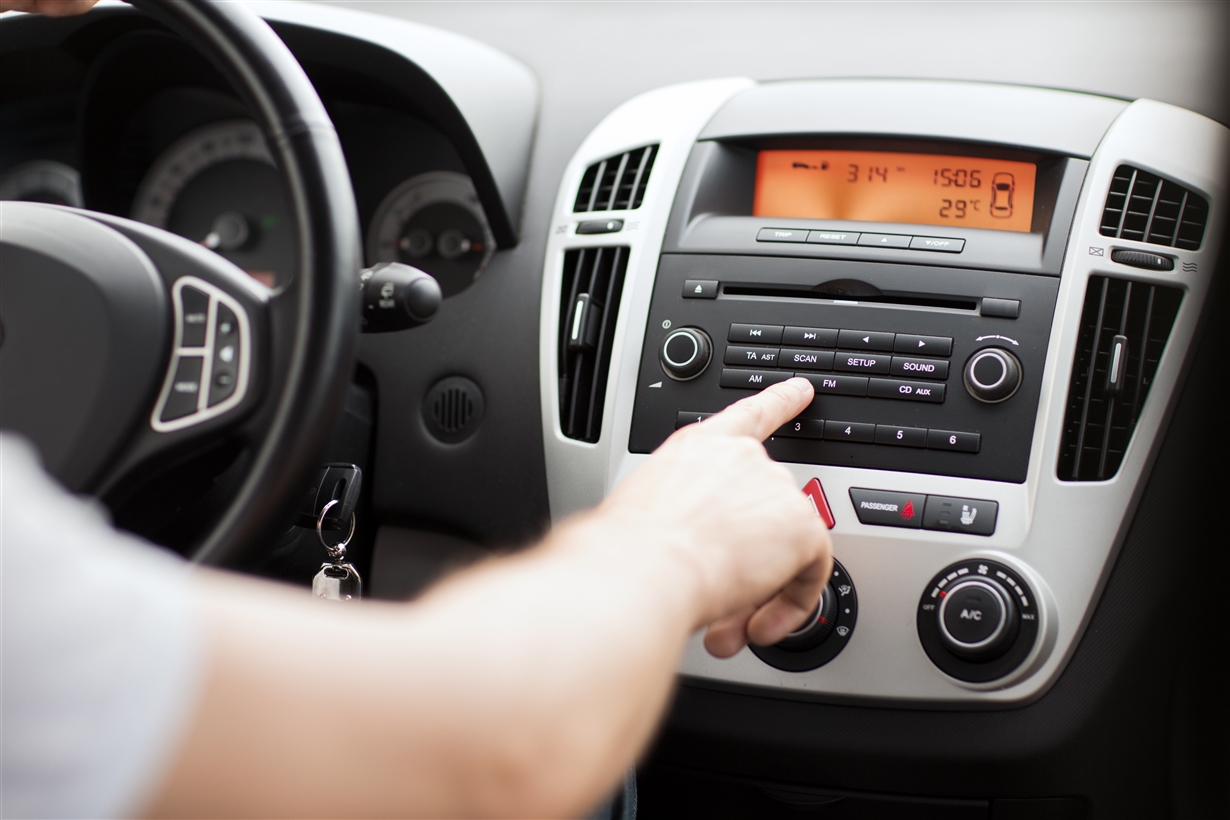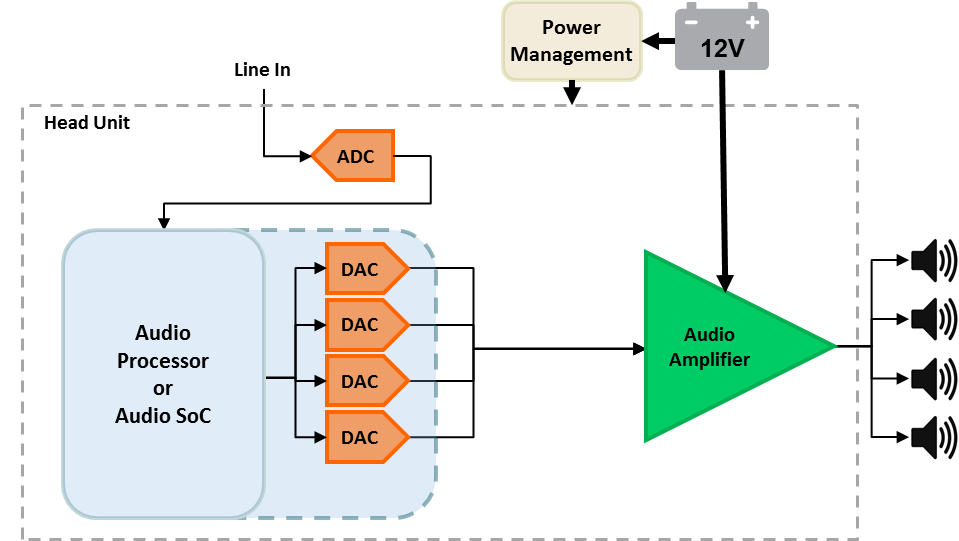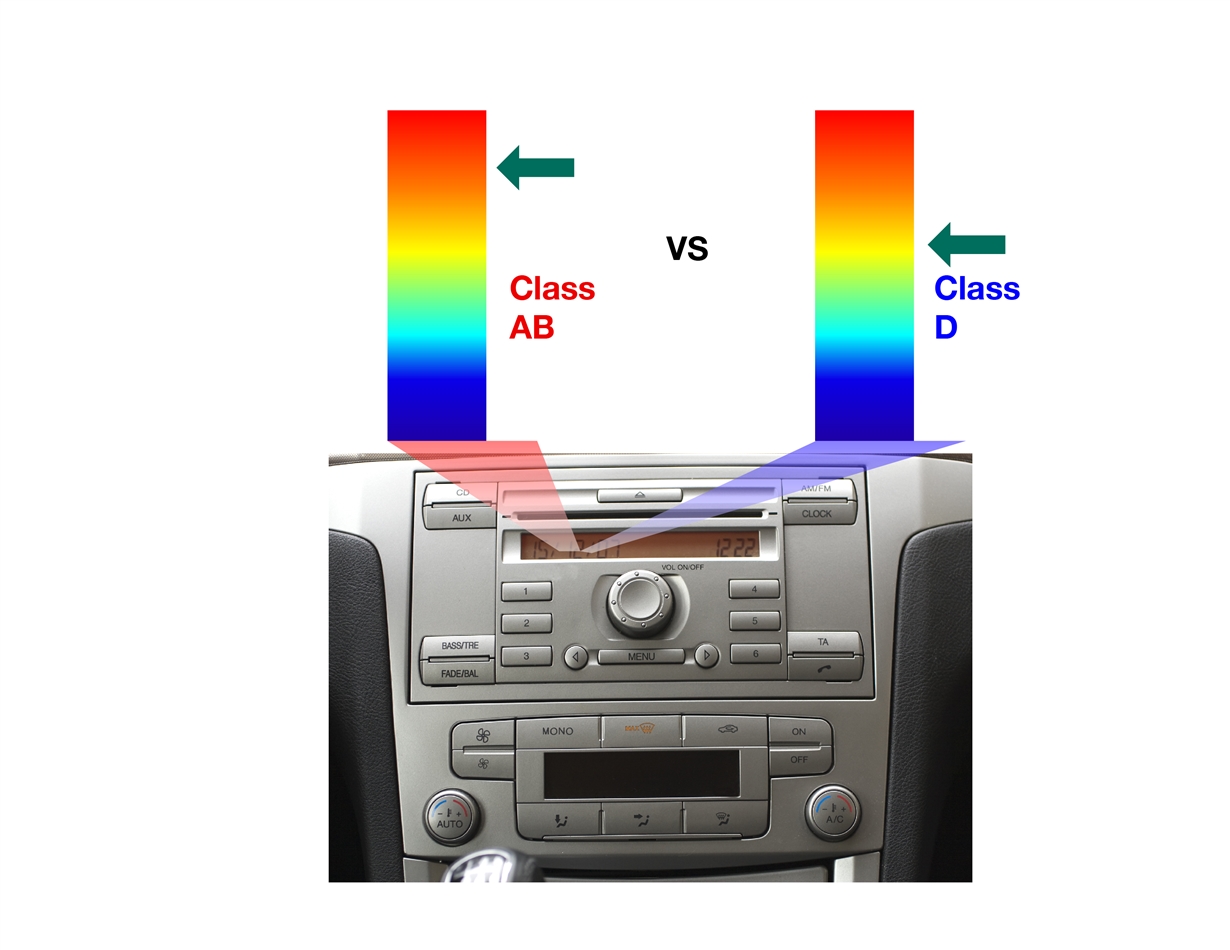SSZTBQ1 january 2016 TAS5404-Q1

Cars of all sizes and price ranges are delivering a growing array of entertainment and information to enhance the driving and riding experience. Today’s factory-installed head units typically combine entertainment, multimedia and driver information into one module; they offer AM/FM and satellite radio, a CD/DVD player for music and video, a navigation system, data and multimedia ports (USB, Bluetooth®, line in, line out, video in), and general and vehicle status information.
The head unit is indeed the brain and centerpiece of the car’s sound system. Modern head units are very complex automotive systems, integrating high-speed processors and interface lines, very sensitive signal-chain blocks, and high-output power audio and power supply components densely integrated in the center of the dashboard.
Given such tight space restrictions, printed circuit board (PCB) area and component count come at a very high premium in automotive head-unit systems. It is imperative for automotive original equipment manufacturers (OEMs) to consolidate functionality and minimize subsystem size to make room for additional differentiation.Audio in Head Units
Figure 1 is a very simplified block diagram of a typical head-unit system.
 Figure 1 Typical Head Unit Simplified
Block Diagram (SBD)
Figure 1 Typical Head Unit Simplified
Block Diagram (SBD)In the figure, you’ll notice that:
- The audio signal’s input front end and output are often combined into a single CODEC, which comprises one or many analog-to-digital converters (ADCs) and digital-to-analog converters (DACs).
- If the audio processor or system on chip (SoC) has integrated DACs, you may not need a codec, as the DAC section of the audio signal chain is already integrated into the mixed-signal SoC.
- The audio line level input from an external source is converted into digital samples by the ADC and fed to the system’s audio processor or SoC.
- On the output side, DACs (whether integrated in the SoC or CODEC) convert the digital audio signal from the processor to analog.
- As the signal coming from the DAC has both low-voltage and low-current capabilities, an audio amplifier is needed to provide the signal with the required higher voltage and current capabilities to drive the drivers in the speaker system.
Audio Amplifiers: Class-AB vs. Class-D
Automotive system designers have basically two alternatives when selecting the best audio amplifier for their automotive head-unit systems: Class-AB or Class-D.
Class-AB audio amplifiers are today’s standard in automotive audio. They are linear amplifiers that generate no electromagnetic interference (EMI) and do not require many external electronic components. They are highly inefficient, however, and require substantial passive or even active thermal management in the form of heat sinks and fans.
On the other hand, Class-D audio amplifiers are highly efficient switching amplifiers that need very little thermal management; however, they do require output inductors that are not exempt from EMI concerns.
Class-D audio amplifiers are rapidly gaining in popularity as their advantages over Class-AB become more evident and their total system cost approaches parity with Class-AB systems.
Efficiency: Speaker Channels.
As infotainment systems become more sophisticated, car manufacturers have increased their speaker channel count to improve system differentiation and market appeal. The power demands on the head-unit audio amplifier increase with the number of speaker channels needed, but space and heat dissipation restrictions limit the power dissipation in the head unit to just a few watts.
In Class-AB-based head units, you can solve this problem by adding an external audio-amplifier box or trunk amplifier, although it increases system complexity and cost greatly.
The high efficiency of Class-D-based head units makes it possible to match the power demands of high-channel-count systems without an external audio amplifier. Their low-power dissipation enables multi-IC implementation directly in the head unit, providing a more cost-effective and simple solution.
 Figure 2 Class-D Amplifier Based Head
Units Greatly Simplify Thermal Management in Head Units.
Figure 2 Class-D Amplifier Based Head
Units Greatly Simplify Thermal Management in Head Units.TI’s automotive Class-D amplifiers’ high efficiency reduces heat dissipation and total system cost by eliminating the use of fans and expensive aluminum heat-sink panels; compared to Class-AB amplifiers, Class-D amplifiers like TI TAS5404-Q1 enables higher channel count, subwoofer 2Ω load capability, and output power in the head unit with no need for an external amplifier.
By leveraging reduced-sized, low-cost, automotive-grade metal-alloy inductors, these Class-D amplifiers reach a very small solution size, down to 10cm2, and allow may allow six or more channels in space-constrained head-unit systems.
In part 2 of this blog series, I will discuss EMI. In the meantime, log in to post a comment below and let me know about your challenges with head-unit audio design and space constraints.